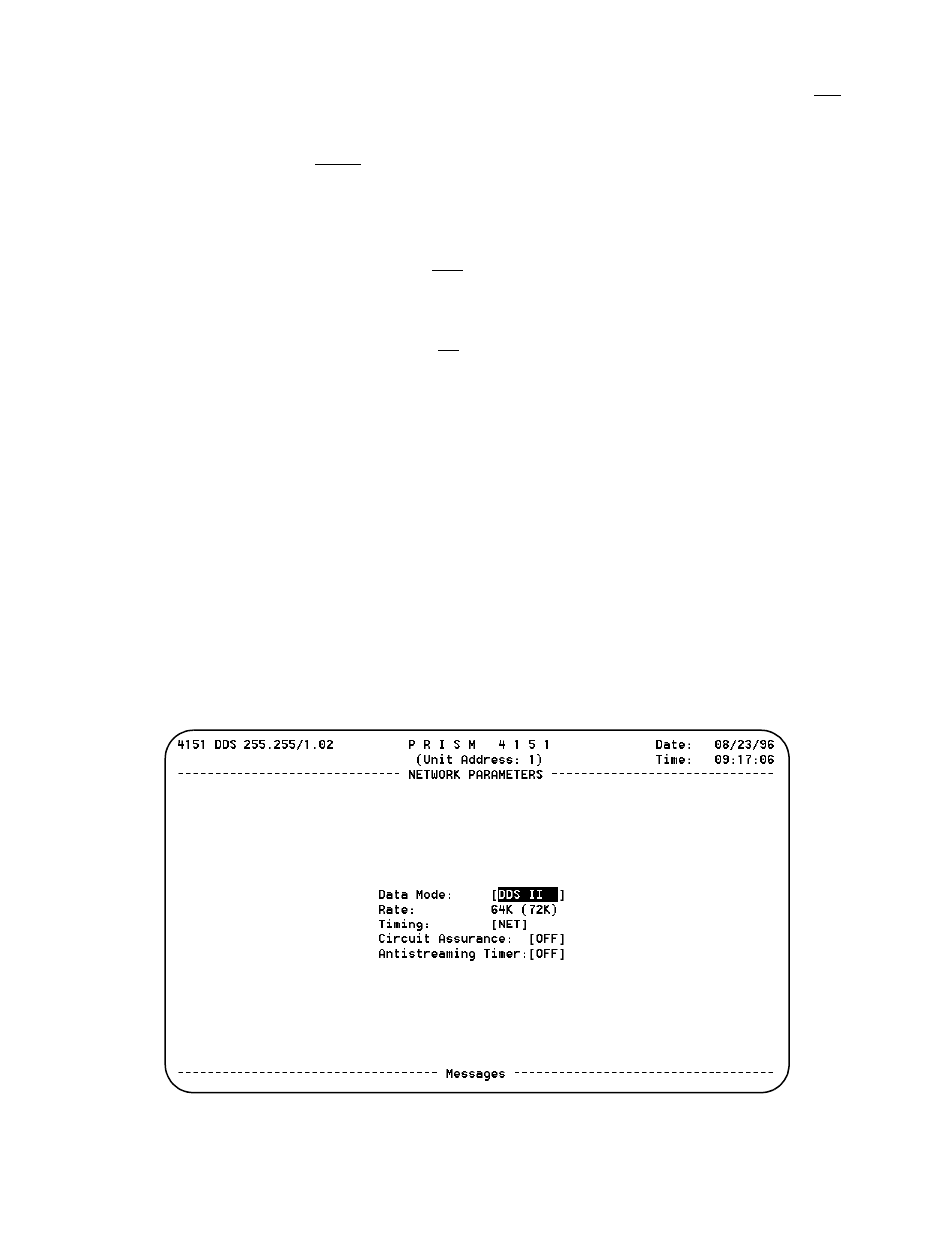Verilink PRISM 4151 (34-00258) Product Manual User Manual
Page 15

Configuration 3-3
PRISM 4151
DDS N
ETWORK
P
ARAMETERS
The DDS Network Configuration screen (Figure 3 -10)
allows you to select parameters for the network interface.
Data Mode: Choices are DDS I and DDS II which is a clear
channel 64 kbps without secondary channel.
Rate: This field is automatically set to 56K for DDS I and
64K (72K) for DDS II. DDS II mode inserts 64 kbps user
data from the DTE into a 72 kbps framed network signal.
Timing: This field selects the bit rate clock source. NET
uses the received network signal as the clock source. INT
uses the internal oscillator (25 ppm) for the clock source.
DTE uses TXC from the DTE interface as the clock source.
Circuit Assurance: When Circuit Assurance is set to Off,
CTS follows RTS. When RTS transitions to the On state,
CTS will transition to the On state after the RTS/CTS delay.
CTS will transition to the Off state within one bit time when
RTS transitions to the Off state.
When Circuit Assurance is set to On, CTS follows RTS if
DCD is On. When RTS transitions to the On state, CTS will
transition to the On state after the RTS/CTS delay if DCD is
On. CTS will transition to the Off state within one bit time
when RTS transitions to the Off state. CTS is Off if DCD is
Off.
RTS should be set to NORMAL on the DTE PORT parame-
ters when Circuit Assurance is On. The FORCE DCD
option will be changed to NORMAL.
Antistreaming Timer: The Antistreaming Timer is con-
trolled by RTS. If RTS remains enabled long enough for a
timeout to occur, the DDS transmitter will send DMI (Data
Mode Idle / all ones). The Antistreaming Timer is reset
when RTS transitions to the Off state. Choices are OFF, 10,
30, and 60 seconds.
Figure 3-10 DDS Network Parameters Screen
